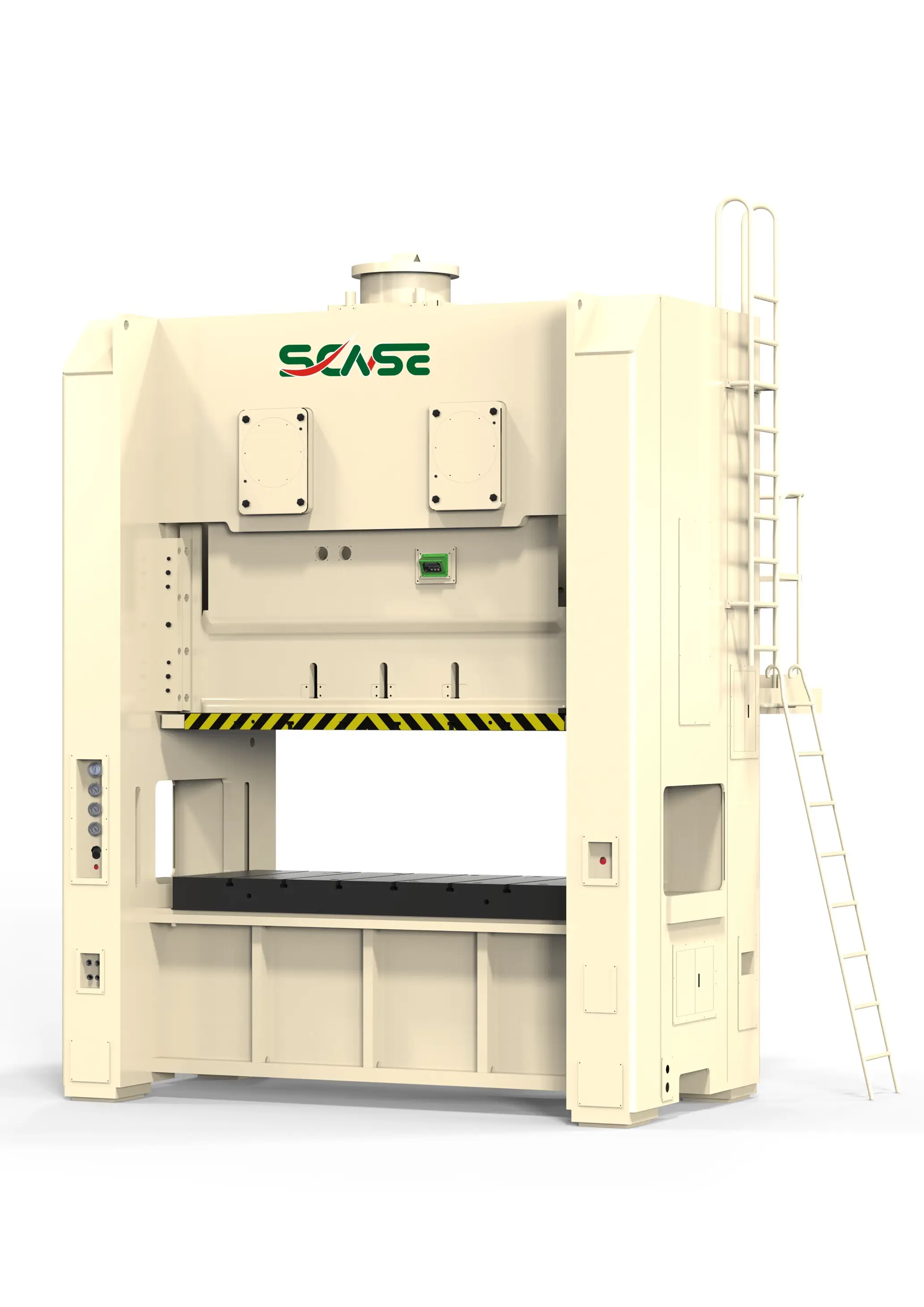Key Components and Working Principle of H-Type Press Machine Explained
H-Type press machines are widely used across various industries, including automotive, aerospace, and metal fabrication, owing to their high force capacity and precision in handling complex fabrication processes. These machines, characterized by their robust H-frame design, hydraulically powered cylinders, and stable forging tables, are essential in maintaining the quality and consistency required in modern manufacturing. The automotive industry leverages them for precise forming of body panels, while the aerospace sector relies on them for the intricate stamping and bending of lightweight aluminum alloys. Overall, H-Type presses are a cornerstone of high-end manufacturing processes.
Understanding H-Type Press Machines
H-Type press machines are distinguished by their robust, rigid frame structure, crucial for maintaining precision and stability, particularly in demanding applications. The H-frame design ensures superior load distribution and minimal deformation, making these machines indispensable in production lines that require both precision and force. The hydraulic system is key, controlling the application of precise force, while the control mechanism manages the stroke sequence and timing for high efficiency. Regular maintenance, including fluid checks, filter changes, and die inspections, extends the machine's lifespan and operational reliability. Smart materials and predictive maintenance can further optimize performance and minimize downtime.

The Mechanics and Operational Principles of H-Type Press Machines
The mechanics of H-type press machines center on a robust H-frame that provides structural support and rigidity. Hydraulic cylinders at the columns generate the necessary force, which is directed through custom dies designed for specific material shapes and product requirements. The hydraulic system, comprising pumps, fluid lines, and valves, delivers pressurized oil to the cylinders. The frame's load-bearing capacity, often measured in tons, is achieved through hardened steel components and efficient hydraulic design. Comprehensive maintenance routines, such as regular fluid checks and die inspections, ensure the machine operates at its best, reducing downtime and improving efficiency.
H-Type Press Machine Enhancements
Enhancements to H-type press machines focus on die changeover flexibility, noise and vibration reduction, and material handling efficiency. Advanced automation and modular design significantly reduce die changeover times, enhancing versatility. To minimize noise and vibration, hybrid damping systems and advanced materials can be integrated, ensuring worker safety and a favorable factory environment. Optimized material handling systems, combining robotic arms with conveyor systems, improve efficiency. User-friendly interfaces and intuitive controls, featuring touch-screen dashboards and step-by-step guides, enhance operator efficiency and safety. Additionally, the integration of renewable energy sources and advanced motor controls improves sustainability while maintaining cost-effectiveness.
Safety in H-Type Press Machines (Features, Regulations, Protocols)
Enhancing safety in H-type press machines involves several critical features, regulations, and protocols:
- Guardrails and Enclosures: Ensuring operators are safe from direct contact with the press ram and potential hazards.
- Emergency Stop Systems: Easily accessible and clearly marked for immediate machine shutdown in emergencies.
- Compliance with ISO 14121-1: Adhering to international safety standards to ensure safety features are up to international benchmarks. Regular audits and inspections are necessary.
- Training and Education: Training operators and maintenance personnel on safety features and protocols to prevent accidents and maintain a culture of safety.
- Real-time Monitoring and Alerts: Utilizing IoT and AI for instant alerts on potential issues to ensure prompt action and equipment integrity.
Case Studies and Comparative Analysis of H-Type Press Machines
H-type press machines have shown significant advancements in efficiency and versatility, as demonstrated in various case studies:
- Automotive Industry: A 30% reduction in production time and a 25% decrease in material waste were realized through the use of advanced automation and CNC technology.
- Car Manufacturer: A German car manufacturer reduced operational costs by 15% through a closed-loop system, where scrap metal from one operation was recycled in another.
- Material Conservation: Precise die design and simulation techniques reduced waste by up to 25%.
- Energy Efficiency: The application of regenerative braking systems and advanced material recycling technologies enhanced energy efficiency, while digital twin technology and AI algorithms provided real-time optimization and predictive maintenance.
- Operational Improvements: A 15% reduction in waste and a 20% increase in energy efficiency were achieved through these advancements.
These case studies underscore the adaptability and sustainability of H-type press machines, making them an essential element in modern manufacturing processes.
FAQs Related to H-Type Press Machines
What are the key components of H-Type press machines?
The key components of H-Type press machines include a robust H-frame design, hydraulically powered cylinders, stable forging tables, and a precise control mechanism that manages the stroke sequence and timing.What are the operational principles of H-Type press machines?
The operational principles of H-Type press machines involve a hydraulic system delivering pressurized oil to the cylinders to generate force, and a frame design that ensures structural rigidity and load distribution to maintain precision during fabrication processes.What are the safety features and protocols for H-Type press machines?
Safety features include guardrails and enclosures, emergency stop systems, and compliance with international safety standards such as ISO 14121-1. Protocols involve regular training, real-time monitoring, and adherence to safety regulations.What are some enhancements made to H-Type press machines for better performance?
Enhancements include flexible die changeover systems, noise and vibration reduction methods, and optimized material handling systems. These improvements help in reducing downtime, increasing efficiency, and ensuring a safe working environment.What are the advantages of using H-Type press machines in manufacturing?
H-Type press machines offer advantages such as high force capacity, precision in handling complex fabrication processes, and the ability to maintain quality and consistency in production. They are particularly useful in industries like automotive and aerospace where precision is critical.





